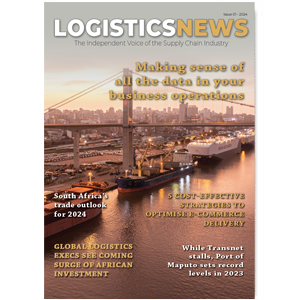During the 2024 budget speech, Finance Minister Enoch Godongwana said the National Treasury will not increase the general fuel levy and Road Accident Fund (RAF) levy for 2024/25. The treasury would however, increase the carbon fuel levy from 10c/l to 11c/l for petrol and from 11c/l to 14c/l for diesel.
According to Godongwana, a discussion paper outlining proposals for the second phase of the carbon tax will be published for public comment later in the year. However, this should not dampen your Easter holiday travel plans or cause any panic as Justin Manson, Sales Director at Webfleet South Africa, Bridgestone’s globally trusted fleet management solution offers the following tips to achieve even more savings and possibly claw back the rands burned through the recent years of high fuel prices.
Chart your weekly trips
In the same way that you might make a grocery list and budget for each month, writing a list of expected trips in the week, along with the kilometres for each trip, can expose opportunities to consolidate trips, eliminate some and postpone others. With a big picture view of the expected demands on the vehicle, a motorist can then focus on the appropriate maintenance and safety checks, like tyre pressure or condition, wheel alignment, windscreen wipes, oil and coolant levels, chips on the windscreen and others.
Only when efficient driving and maintenance habits have been adopted, to continuously achieve improvement, should telematics come into play. From fleet managers to households, anyone can make use of smart tracking and monitoring technology to achieve route optimisation and optimal times for various trips.
Flatten the A (acceleration) curve
Vehicles on the road burn a lot more fuel per kilometre in the early gears. Motorists who regularly accelerate and decelerate harshly not only burn more fuel but also limit their opportunities to take in their surroundings to make better, safer decisions.
Match your steeds
With vehicles often serving as more of a status asset than a functional one, motorists tend to purchase the wrong equipment for the wrong job. Rather than buying a luxury saloon designed to be used for limousine services for city self-driving of one person, rather consider a mid-level car that can also seat a handful of children. People who ride alone can save on fuel and parking headaches by opting for a nifty hatchback and regularly clearing unnecessary loads.
Fill in the chill
There is much debate about whether filling up during the coolest times, like late at night or in the early morning, makes much of a difference in volumes of actual fuel. The theory is that fuel expands in the heat and shrinks in the cold and that the same amount of money buys more fuel when it is compressed. While fuel is stored in insulated tanks underground, the difference is in the vehicle itself. A warmer car will burn fuel faster than a cooler one, thus depleting fuel faster.
Let tech help you
With the country slowly transitioning to newer technology in the logistics and transport industry, from 1 March 2026, producers of electric vehicles in South Africa will be able to claim 150% of qualifying investment spending to boost the country’s transition to new energy transportation, this is according to the 2024 budget speech delivered by Finance Minister Enoch Godongwana.
For those who can, driving a hybrid or full electric vehicle can net even more savings. Modern combustion engine vehicles already offer an array of features designed to assist the driver, like adaptive cruise control, pre-emptive braking, park assist, aircon recirculation, idle management and many others. Take the time to learn these features and use them appropriately, taking note of the best options.




